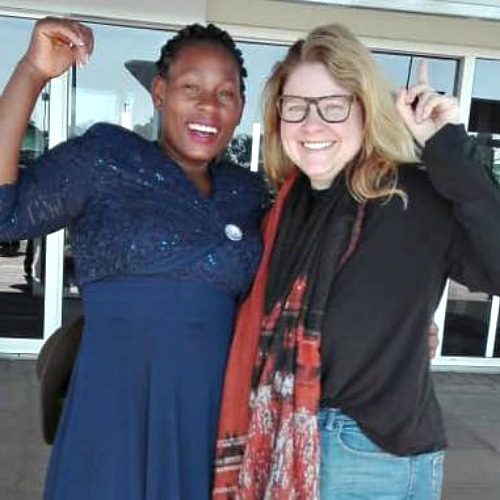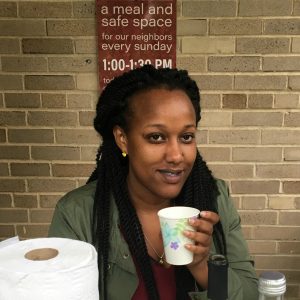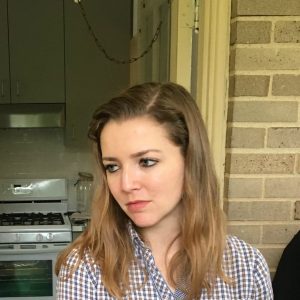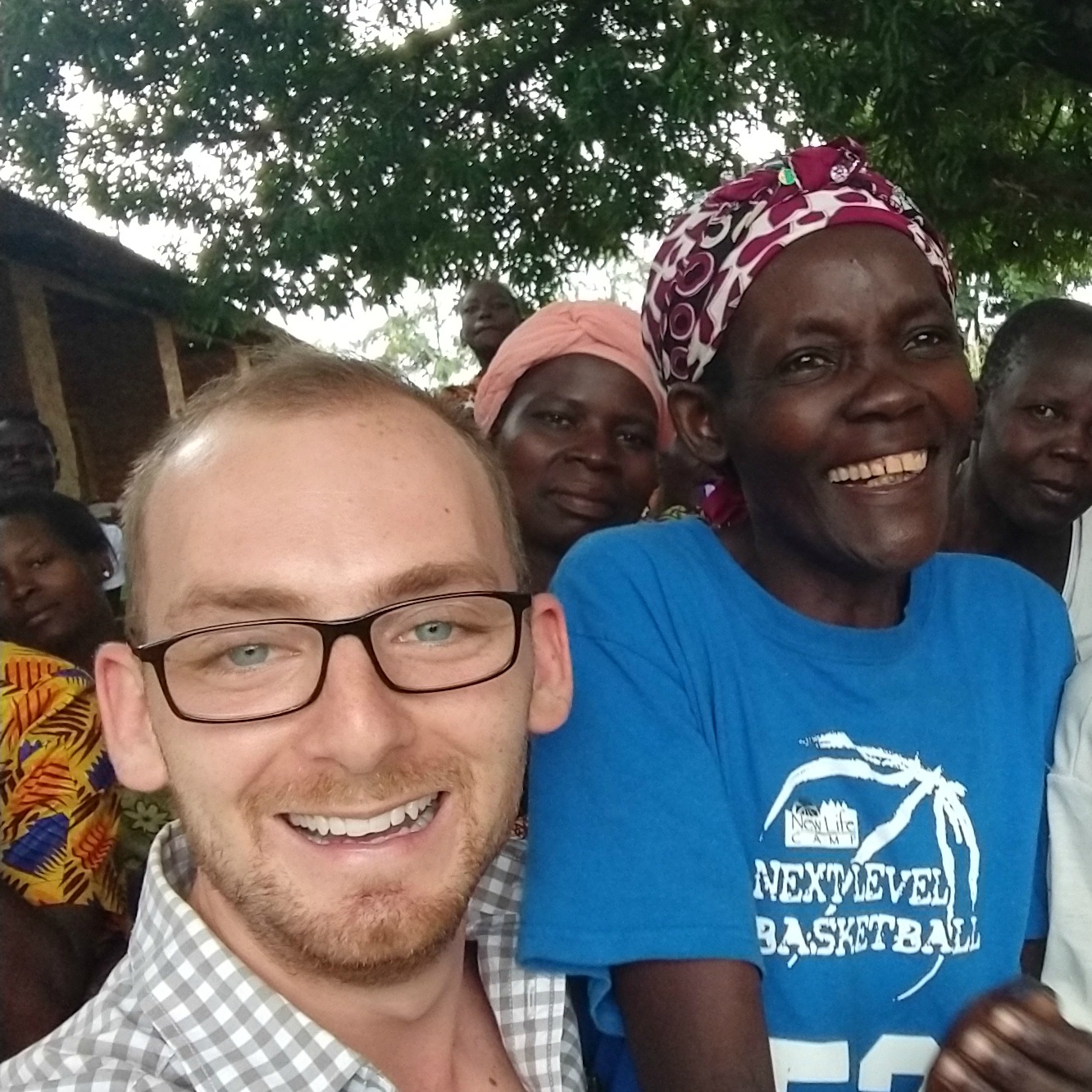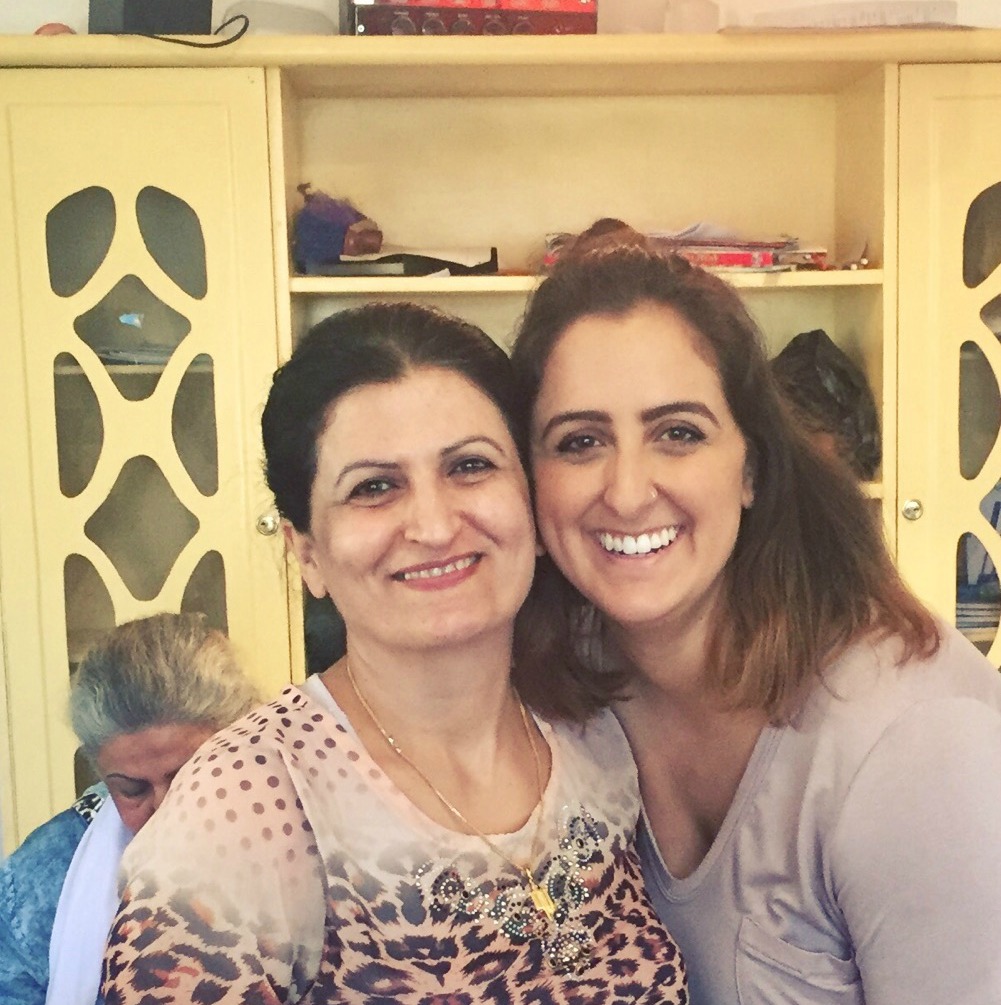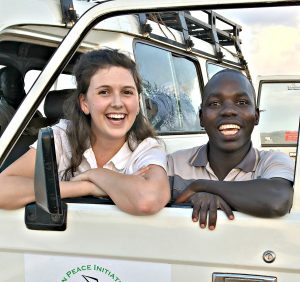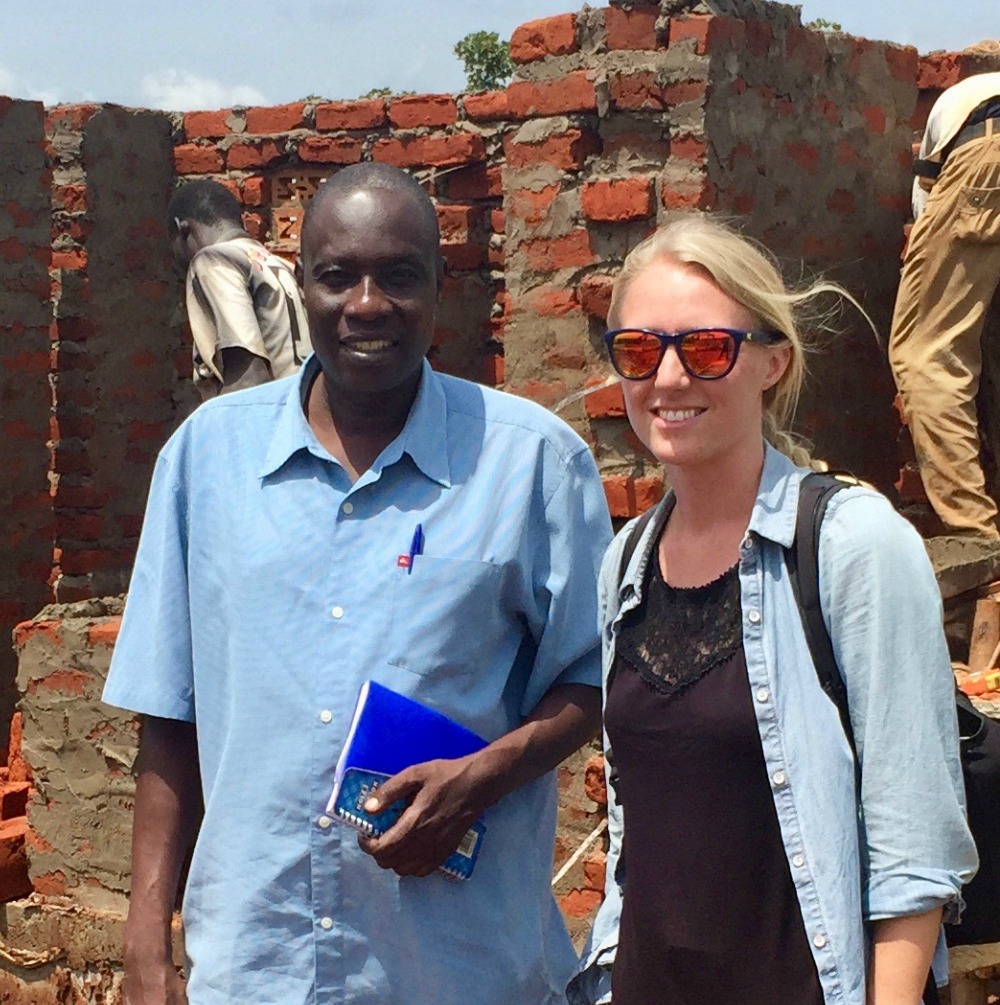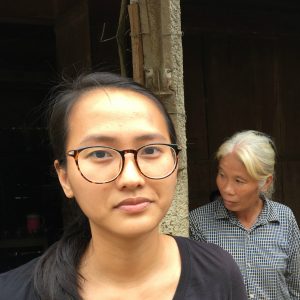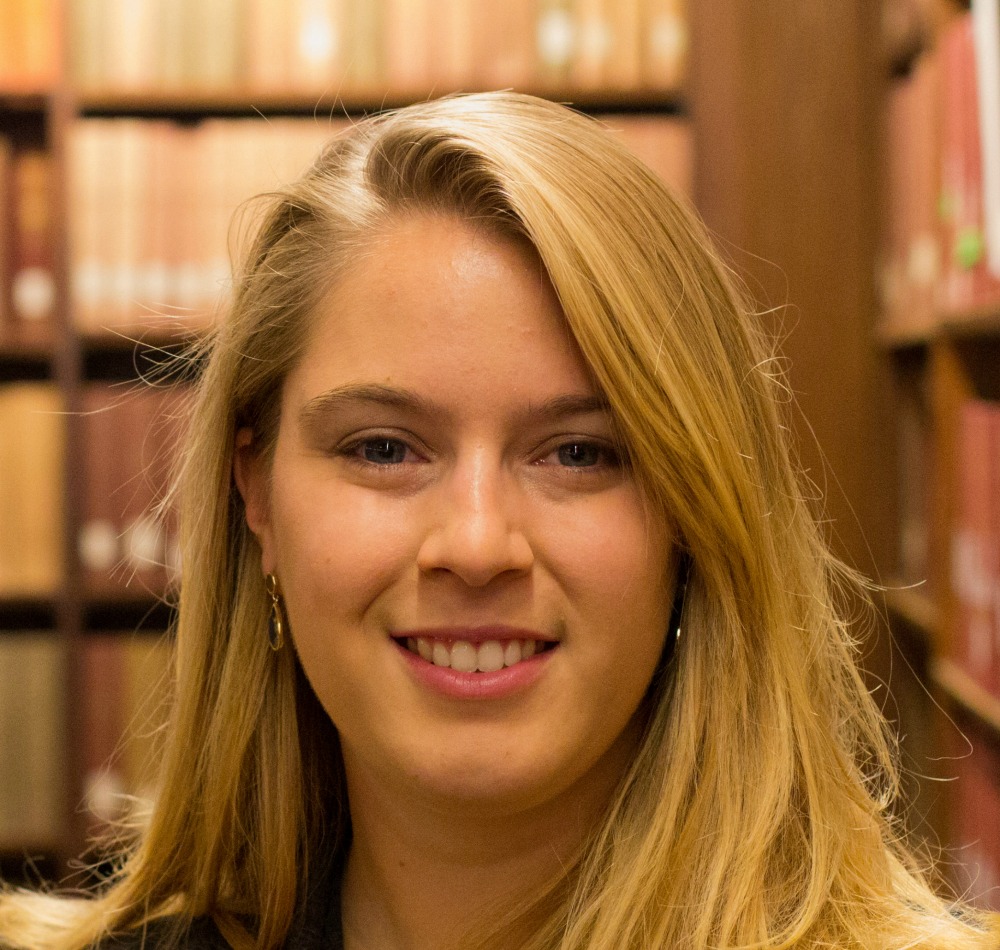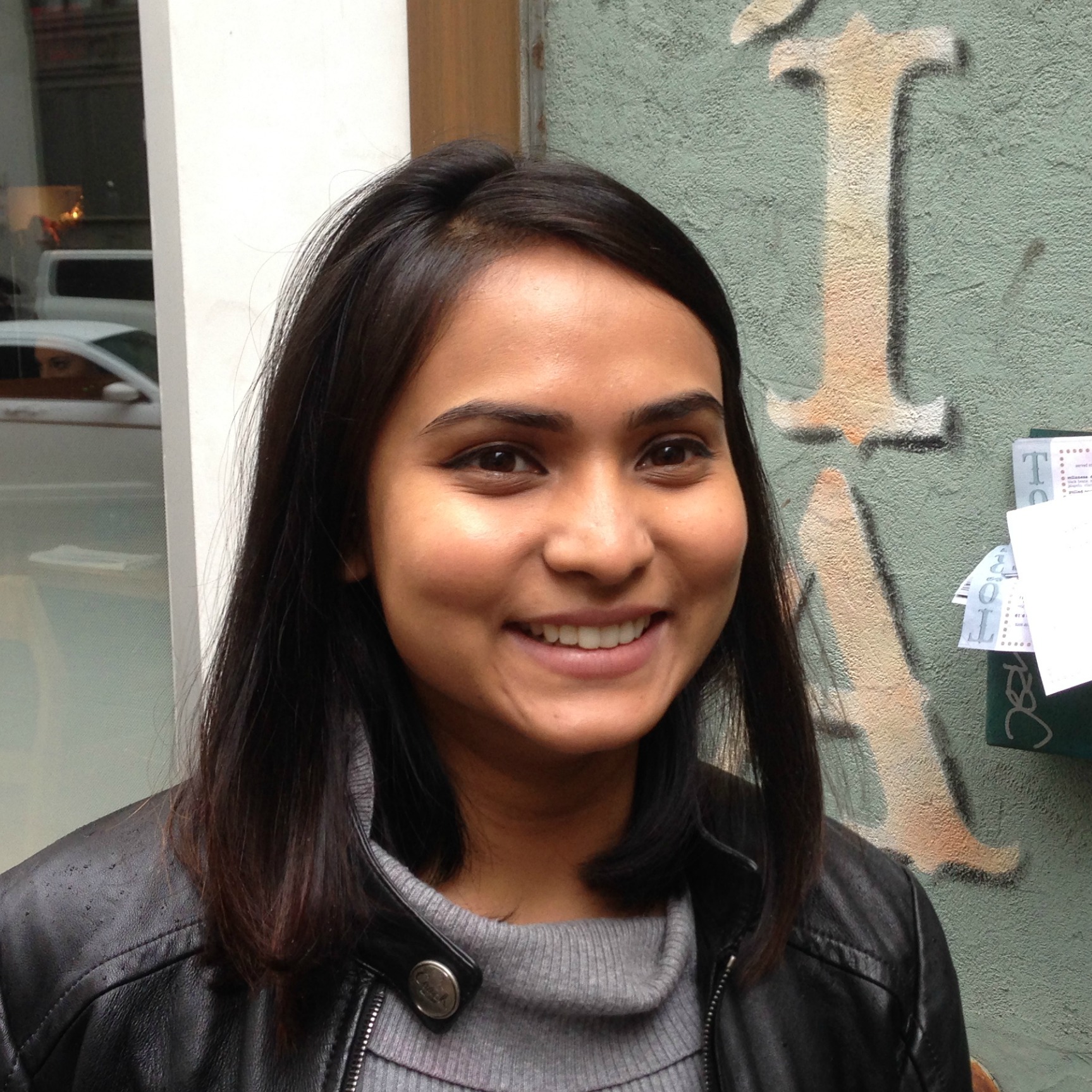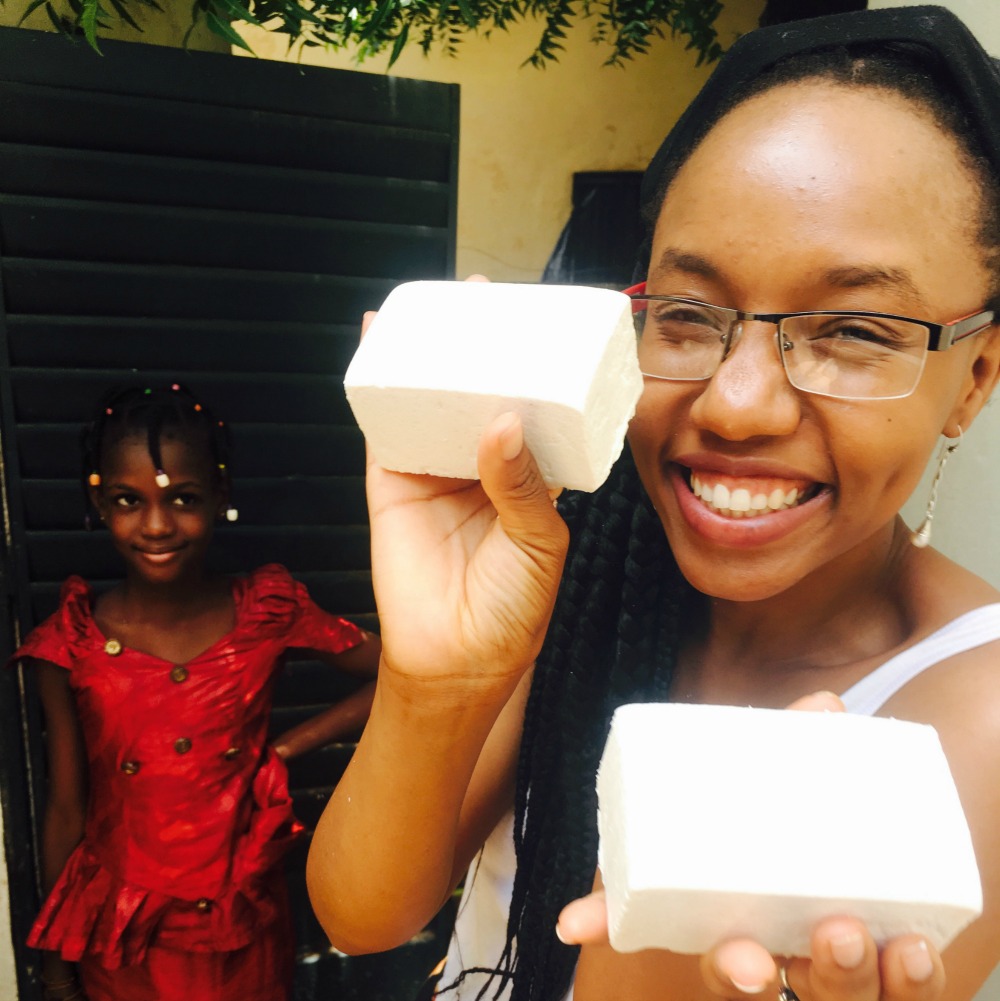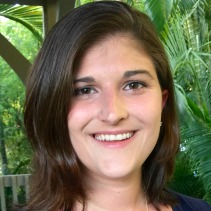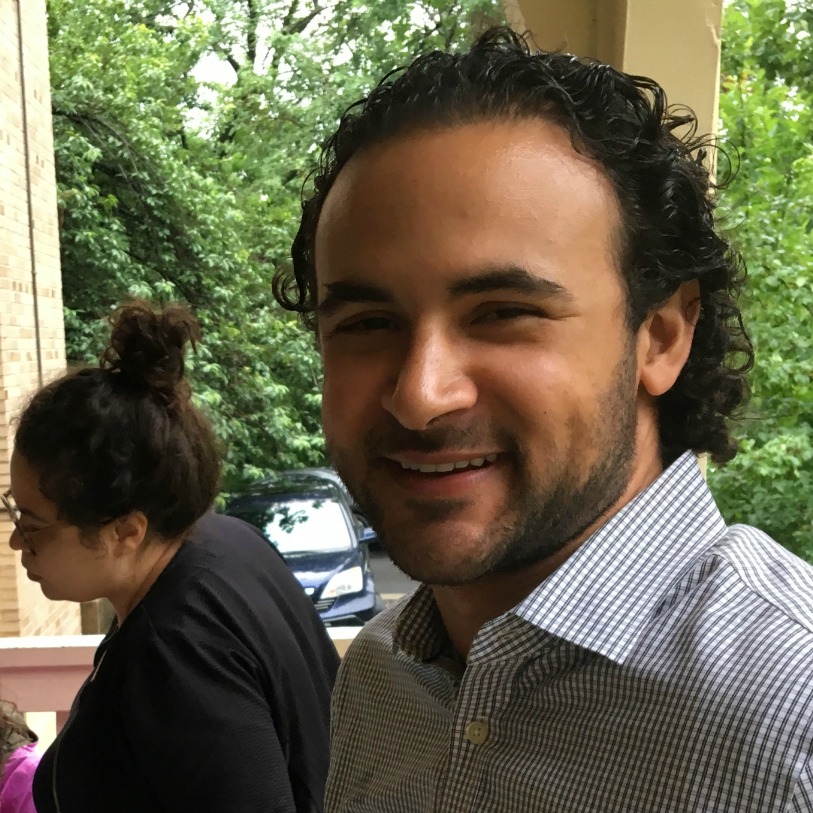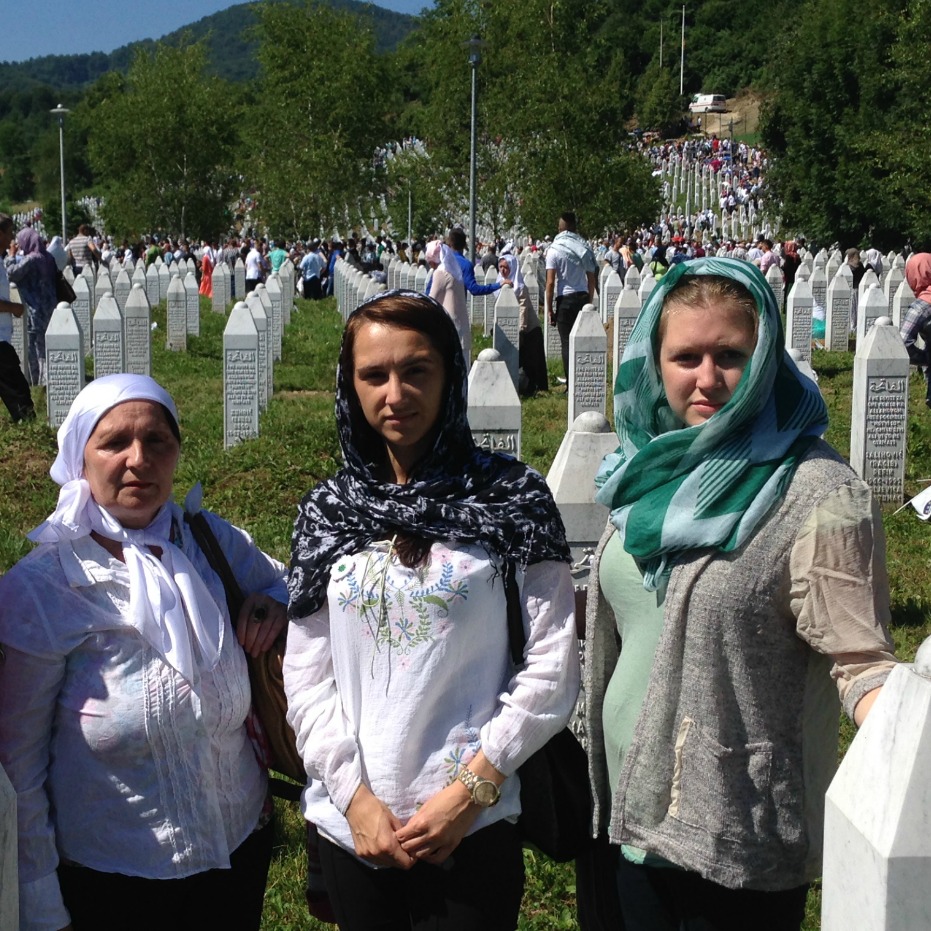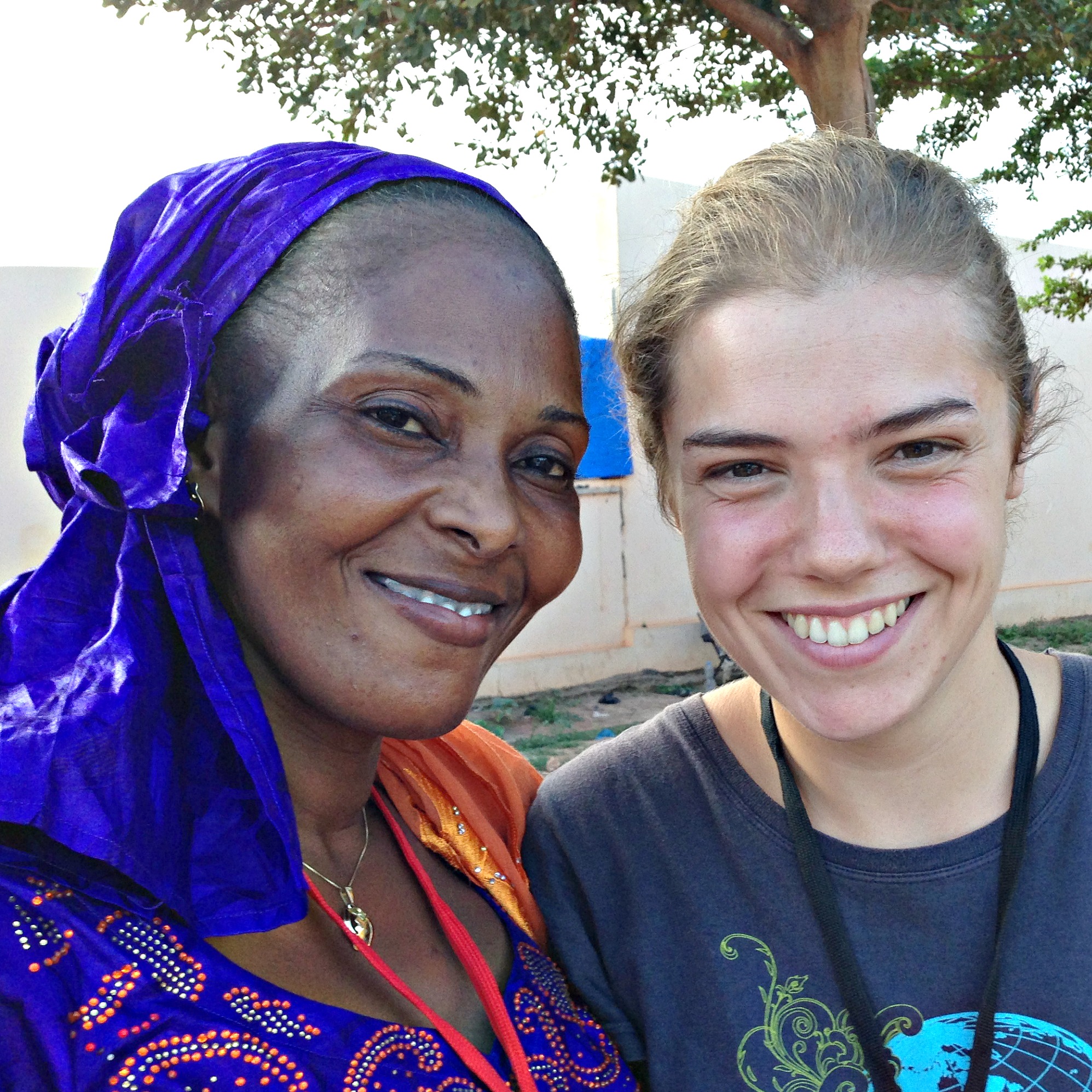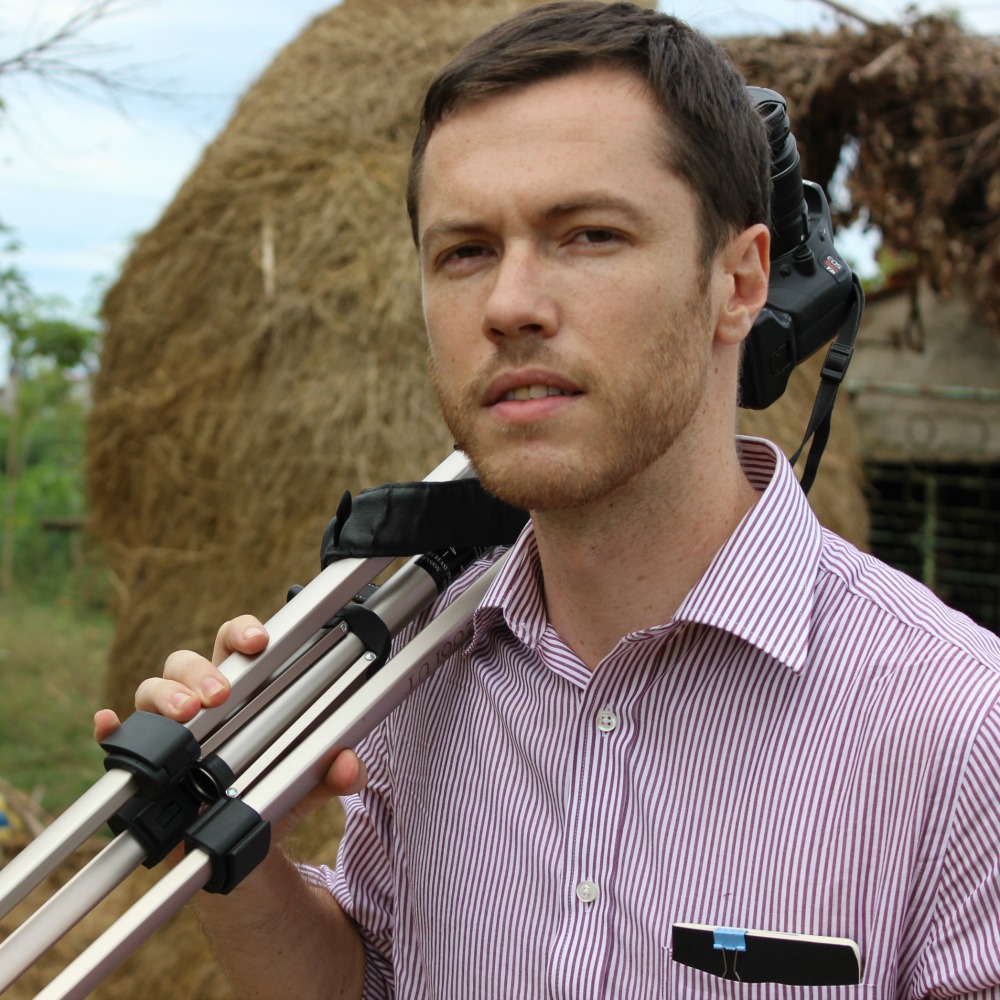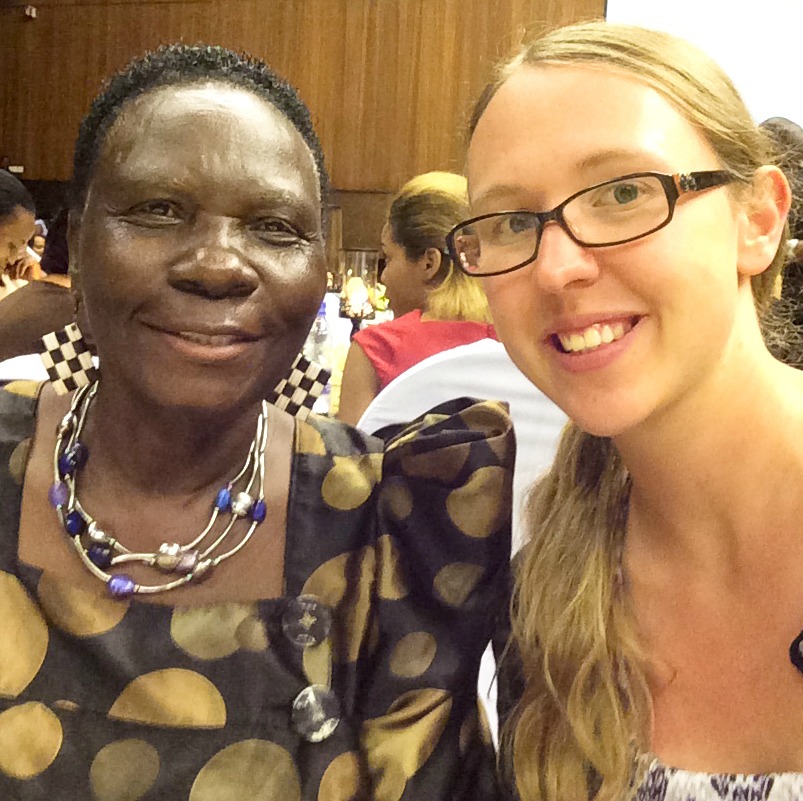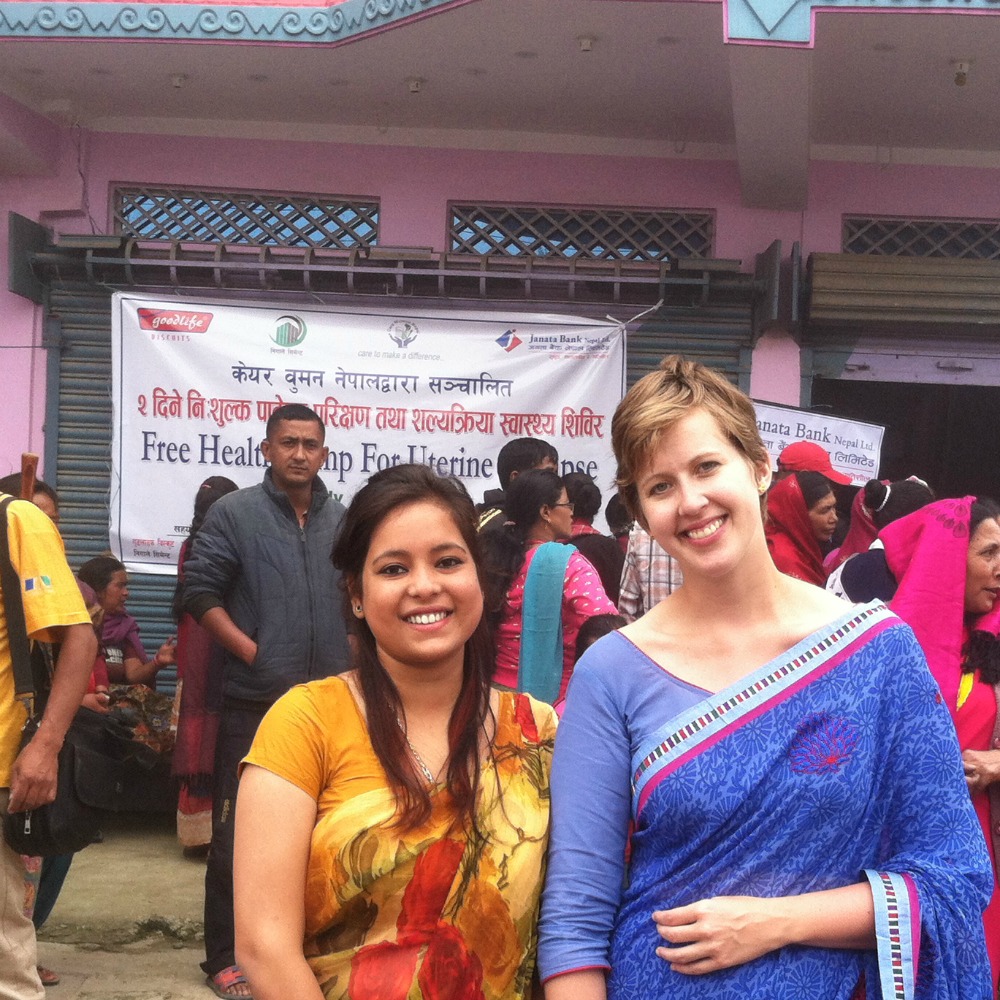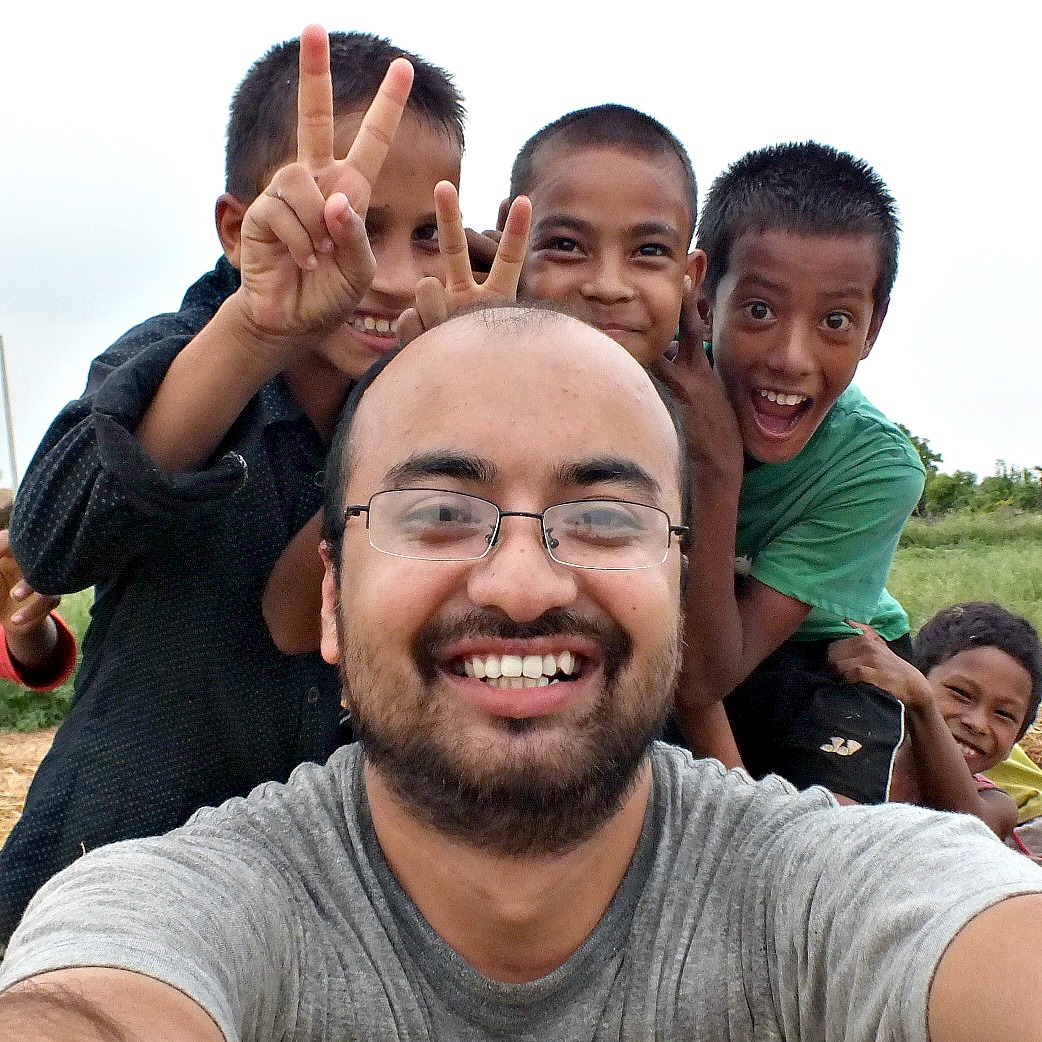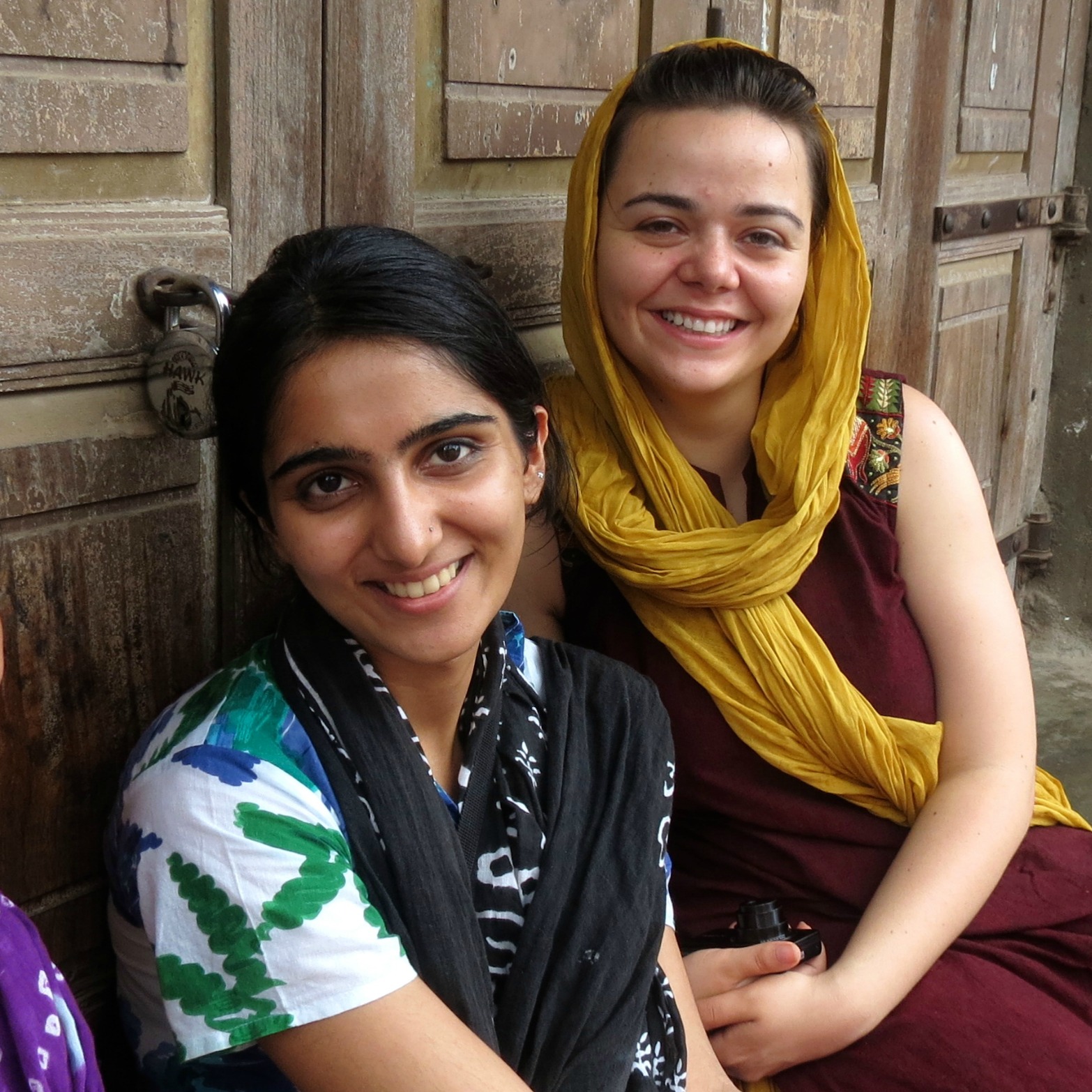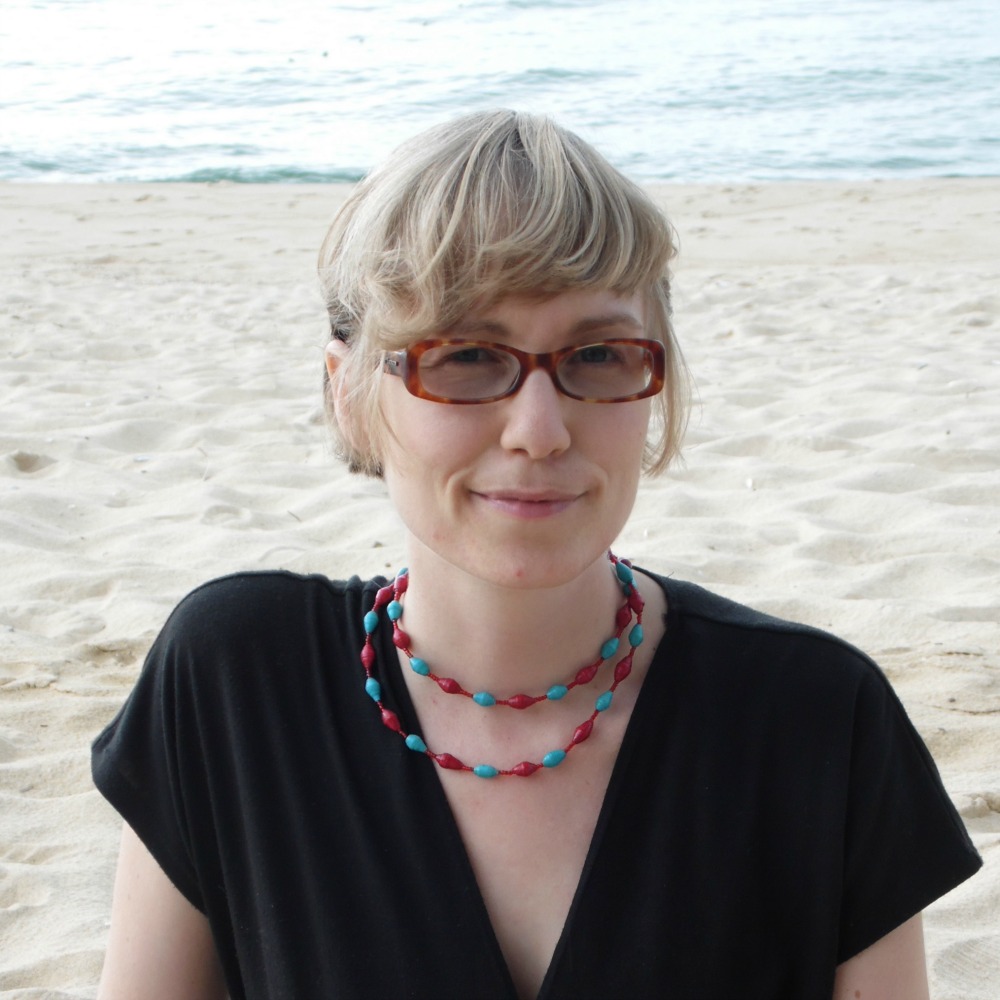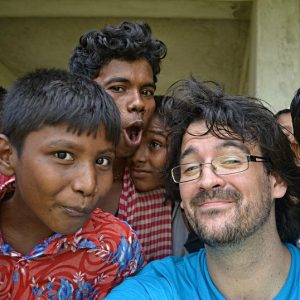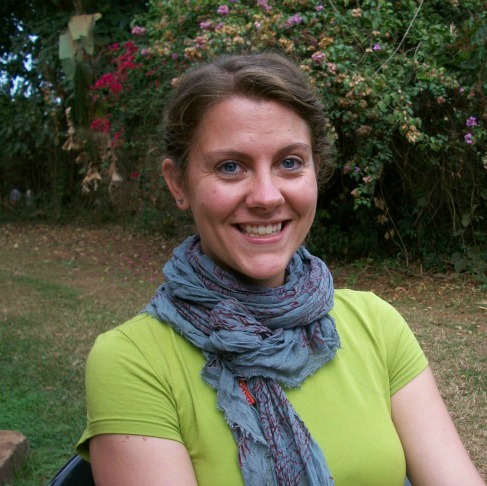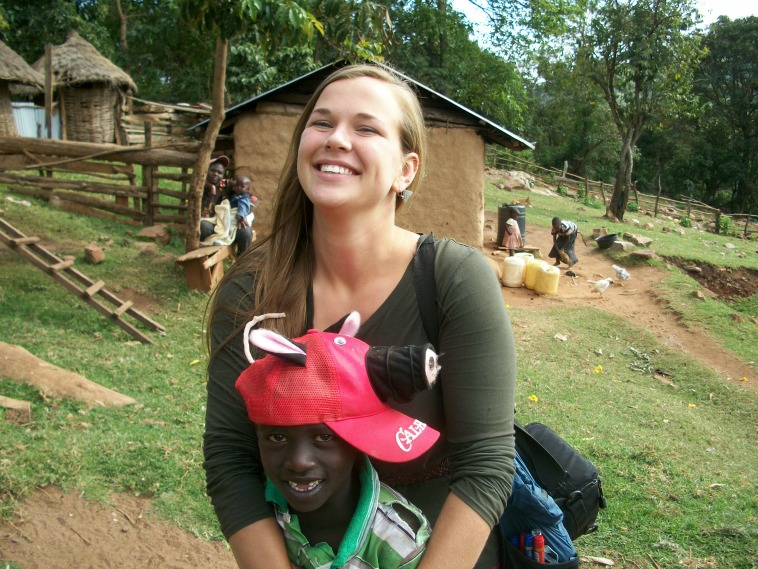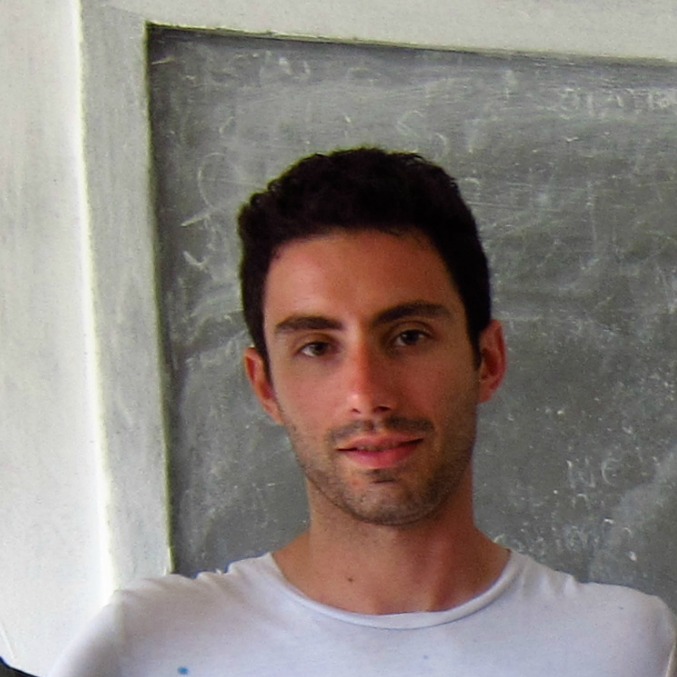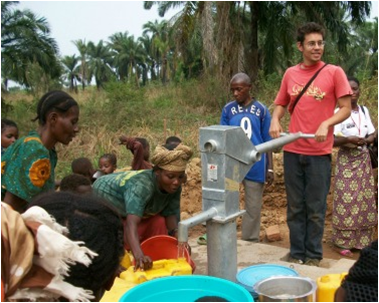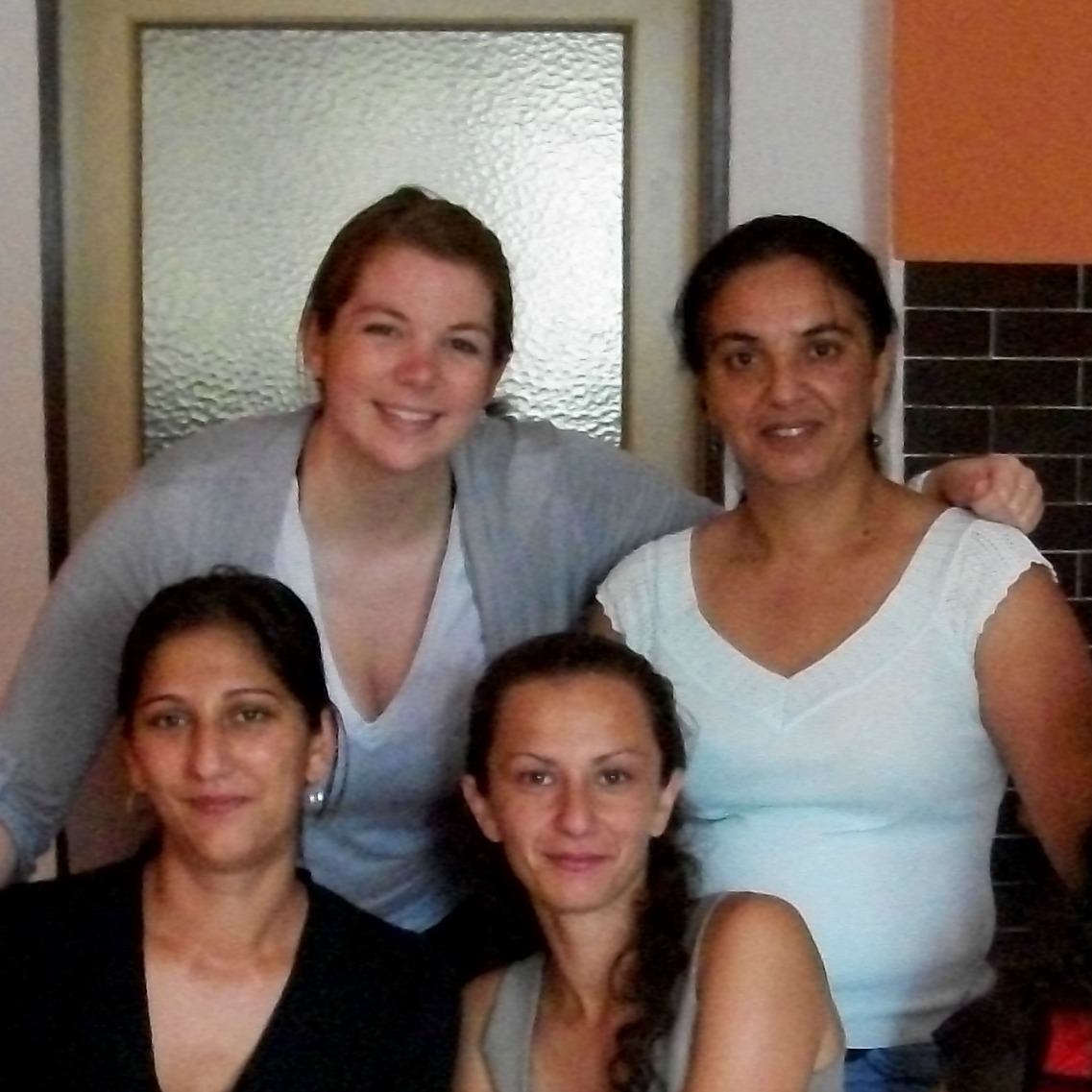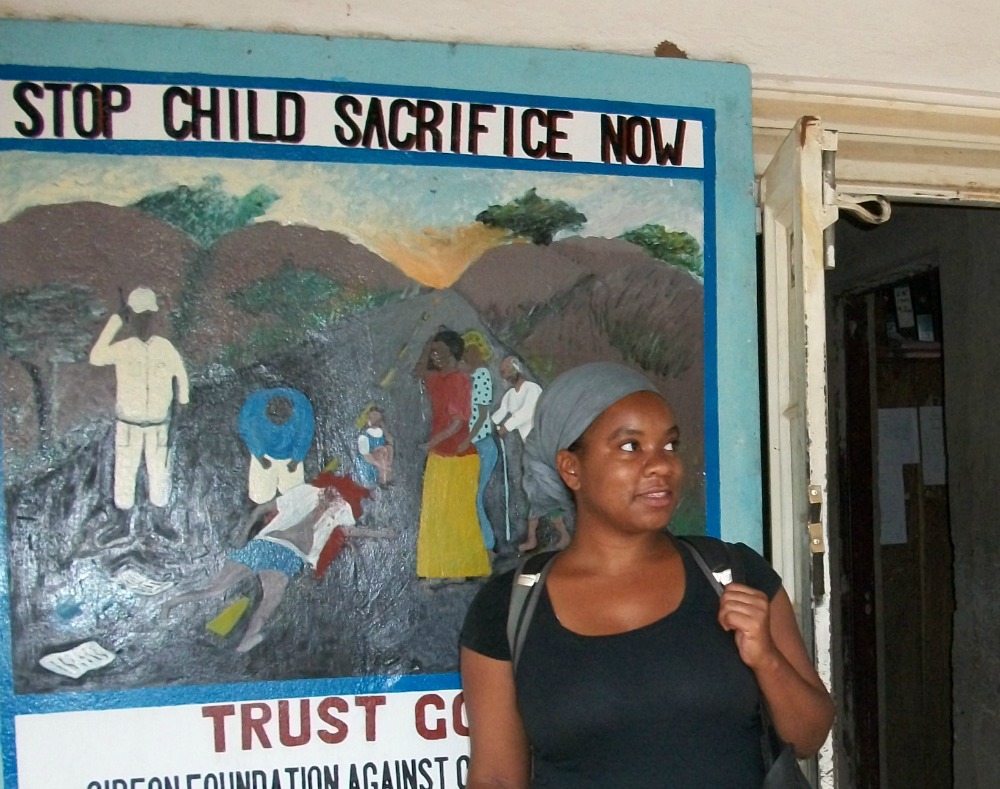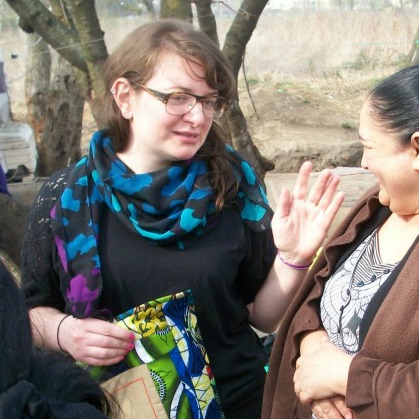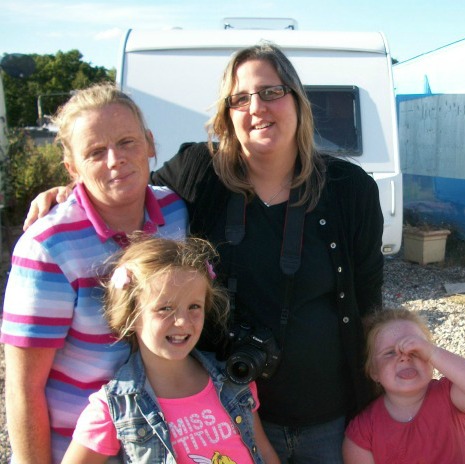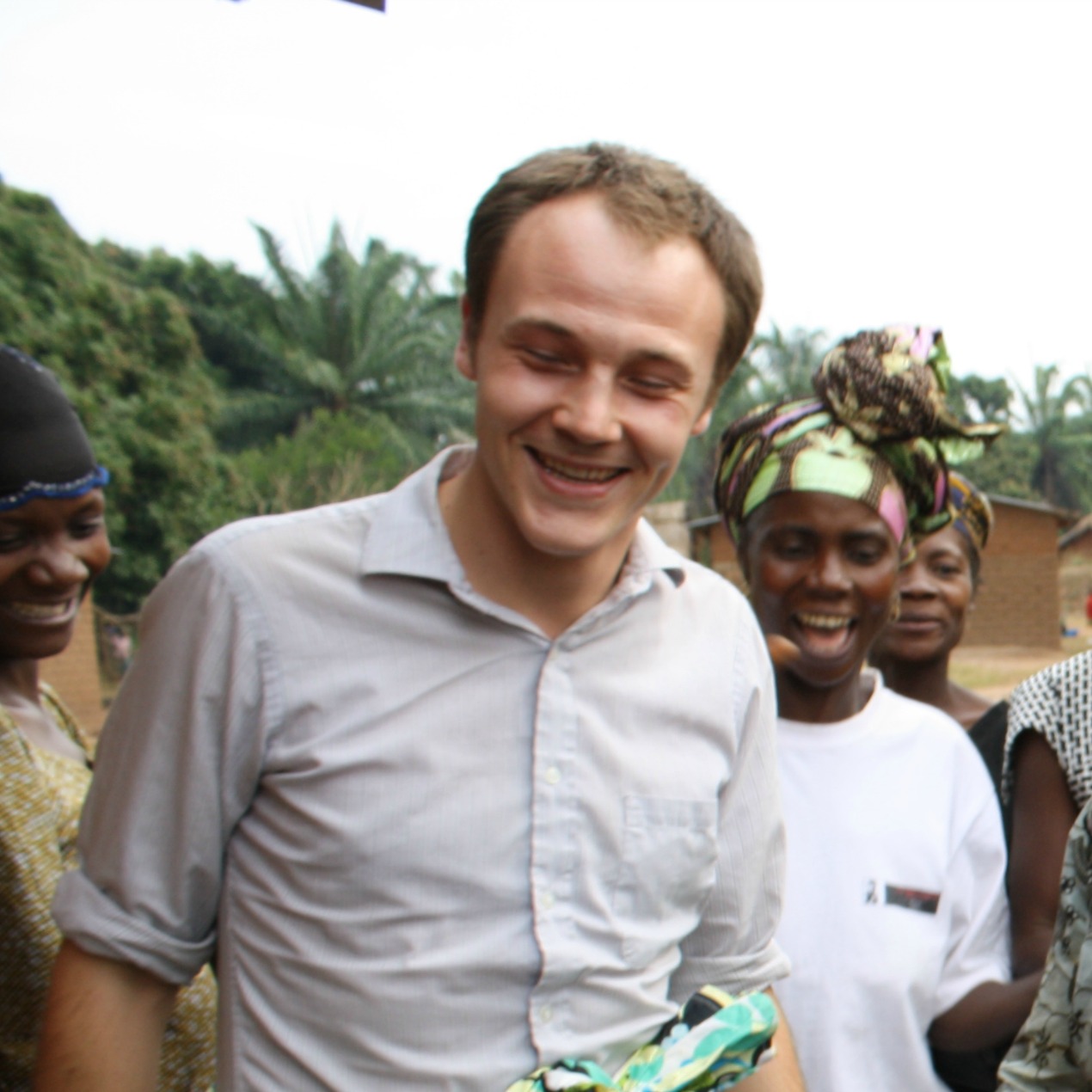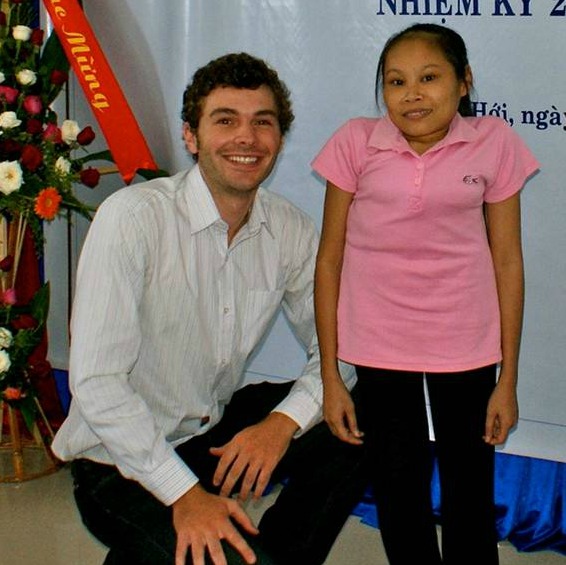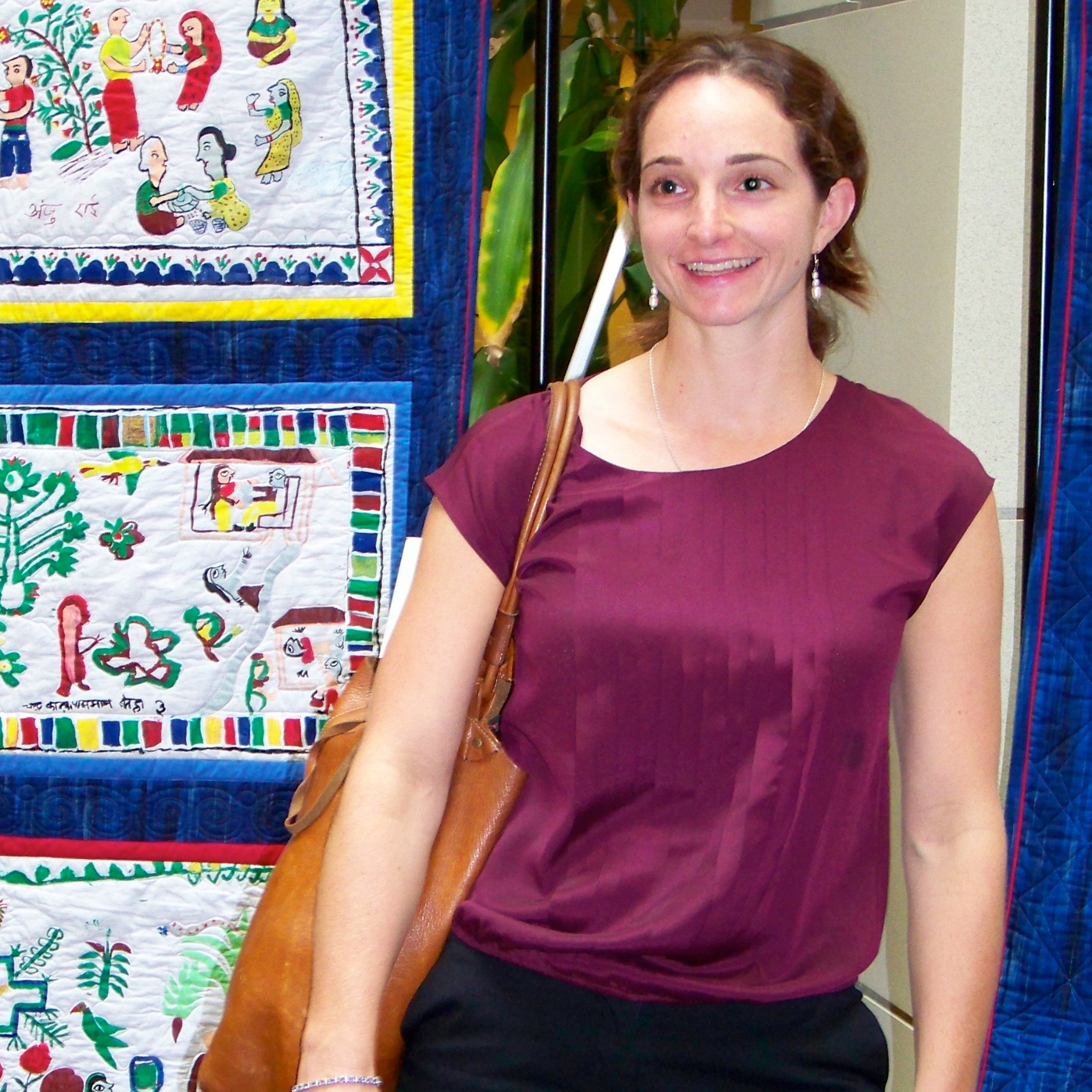How Peace Fellows Support Innovation
Most Peace Fellows are deployed for only 10 weeks, but this is still long enough for them to make a decisive contribution to start-ups which could eventually lead to social change. This page celebrates some of the Fellows who have helped our partners to launch new approaches since we began recruiting in 2003. Many other Fellows have of course made their own valuable contributions to building partnerships and programs.
Training ambassadors against child marriage in Zimbabwe (2018)
Alex Kotowski helped her host (WAP) to design training for girls with strong character who will help other girls reject marriage to older men. Of the 150 girls who attended WAP clubs since the startup was launched in December 2018, no one has married.
Finding work for freed domestic slaves in Nepal (2018)
Years of successful advocacy by NGOs in western Nepal has greatly reduced the number of young Tharu girls who are forced into domestic service as kamlaris. But what happens when the girls are freed? Michelle Nyaga helped BASE to design vocational training for such girls, led by former kamlaris.
Campaigning against menstrual banishment in Nepal (2018)
Caroline Armstrong-Hall helped CAED to design a campaign to end the harmful practice of chhaupadi in Surkhet district. The campaign will train girls to resist pressure from their parents to enter chhaupadi and mentor other less confident girls. CAED will also launch a Facebook page for girls in chhaupadi; test a new law that bans chhaupadi; and put pressure on the Nepali government by denouncing chhaupadi before the United Nations. We expect results by end 2019.
Persuading local government to invest in accessible WASH in Uganda (2018)
Chris Markomanolakis built on the work of previous Fellows when he helped GDPU to install an accessible toilet at the Awach primary school and begin negotiations with the Gulu district to use the GDPU model in future school constructions. Enrollment has risen sharply at the three schools where AP has installed toilets.
Skills training for refugee women in Jordan (2017)
Building on the work of Allyson in 2016, Reina Sultan raised funds to develop a training center at the Hope Workshop in Amman where women refugees from Syria and Iraq can learn new skills and sell embroidered handicrafts without threatening the jobs of local people – a key goal for countries of first asylum like Jordan. By mid-2019, the Workshop was producing and selling exquisite embroidery.
Working with kids and cows to build peace in Kenya (2017)
Talley Diggs raised funds to help CPI Kenya to encourage cooperation between warring tribes in northwest Kenya. Talley’s funds purchased 20 cows which are being jointly raised by families from the Pokot and Samburu tribes in northwest Kenya. The project, known as Heifers for Peace, gives warriors an economic incentive to collaborate rather than fight.
Mobilizing parents to build accessible school toilets in Uganda (2017)
Lauren Halloran and Patrick Ojok from GDPU won agreement from parents of students at the Ogul School to dig the pit for a new accessible toilet – the second toilet funded by AP since 2015. After donating their labor, parents felt more motivated to send their children to school and protect the toilet from vandalism.
Turning Agent Orange families from victims to investors in Vietnam (2016)
Ai Hoang – who left Vietnam as a child – returned to Quang Binh province, where she helped AEPD to raise funds and develop business plans for three families stricken by Agent Orange. Formerly considered unreachable, the ageing caregivers have used their money wisely and are now considered credit-worthy.
Using embroidery to describe the refugee’s flight from war in Syria and Iraq (2016)
Allyson Hawkins was the first Fellow to serve at the Collateral Repair Project (CRP) in Amman, which provides emergency services for women refugees. Many of CRP’s beneficiaries were skilled at crafts, and Allyson introduced them to advocacy quilting. They produced over 30 graphic embroidered squares describing their journey which have been turned into two quilts and widely shown in the US. This inspired CRP to train the artists to produce embroidery for sale.
Lifting the veil on menstrual banishment in Nepal (2016)
Dorothy Khan spent several weeks in the village of Gutu, west Nepal, and used her blogs to provide a first-hand account of what it means to be banished to a chhau goth (cowshed) during menstruation. Dorothy also funded a room at the Gutu school where girls can rest during menstruation instead of being sent home to a cowshed.
Helping survivors of sexual violence to build a soap business in Mali (2016)
Sini Sanuman trains survivors to make soap as a way to boost their morale and income. Peace Fellow Rose Twagirumukiza helped to turn the training into a business (Sini Savon) by buying new soap molds, building a storage shed, developing a system of accounting, and sharing profits among trainees. This had a dramatic effect on productivity: The women sold 34,576 bars in 2017, and earned over $5,000 from sales.
Using embroidery to commemorate the disappeared in Nepal (2016)
Megan Keeling worked with 25 women whose husbands, fathers and brothers disappeared during the conflict in Nepal. They were led by Sarita Thapa. The women followed the example of many previous AP beneficiaries by commemorating their lost loved ones through embroidery and forming a cooperative to produce and sell embroidered products. By 2019 the Bardiya cooperative had produced two striking memoriual quilts and was making 100 Tiger bags for sale in the US.
Installing the first accessible school toilet in Uganda (2015)
Josh Levy funded an accessible toilet for students with disabilities at the Tochi primary school in Gulu District. Working under Patrick Ojok from GDPU, Josh showed that a toilet can be installed in 10 weeks at far less cost than the government model. Patrick and Josh also organized inclusive training for students and staff to end the bullying of students with disability.
Helping Srebrenica survivors to move from commemoration to business (2015)
Sarah Reichenbach helped the weavers of BOSFAM in Tuzla and Srebrenica to return to their roots as carpet weavers. Sarah raised over $2,000 for the BOSFAM workshop in Tuzla, which had been badly damaged by floods. She is seen here with weavers from BOSFAM at the Potocari cemetery on the 20th anniversary of the 1995 Srebrenica massacre.
Strengthening the advocacy of GBV survivors in Mali (2014)
Giorgia Nicatore helped Sini Sanuman to evolve into a well-run organization capable of managing large grants from the governments of Germany and Liechtenstein. German funding enabled Sini Sanuman to provide counseling and training for 645 GBV survivors between 2014 and 2017 – one of the most innovative programs ever supported by AP.
Investing in Survivors of Agent Orange in Vietnam (2014)
Seth McIntyre helped his host (AEPD) to organize a needs assessment of 500 families in the province of Quang Binh that had suffered from dioxin poisoning caused by Agent Orange. AEPD and AP decided to launch a program to invest in ten families suffering from severe disability by working directly with the caregivers. This marked a shift from the more conventional approach of cleaning up Agent Orange “hotspots.”
Mobilizing women in Uganda to fight against plastic pollution (2014)
Shannon Orcutt helped the Kinawataka Women Initiative (KIWOI) to mobilize poor women to remove plastic from the neighborhood and make plastic bags from recycled plastic straws. This won praise from the international Plastic Pollution Coalition and opened up a new front for KIWOI’s advocacy. Uganda has since banned the use of plastic bags.
Screening village women with prolapse in Nepal (2014)
Katie Baczewski helped her host, Care Women Nepal, to organize one of the first prolapse health camps for village women in the mountainous district of Dhankuta. CWN’s founder Indira Thapa spread the message in villages and persuaded a team of medical professionals to volunteer their time – showing showed how women’s civil society can bridge the gap between government medical services and under-served communities. AP raised over $30,000 for health CWN camps between 2014 and 2017.
Using education to free children from domestic slavery in Nepal (2013)
Sugam Singh, himself from Nepal, helped his host SWANN, in Dang district, to pay the school fees of ten girls who had been marked by their parents for domestic service as kamlaris. AP raised the money. This pilot project showed how education can not only prevent child labor but also protect the right to education – an approach that has also been used by AP in supporting CONCERN (also in Nepal).
Helping transgender people in India tell their story through embroidery (2013)
Jasveen Bindra and Andrea Bosneag were among several Fellows who have served at the Vikalp women’s group in Gujarat State. Jasveen and Andrea helped members of the LGBTI community tell their story through painting and embroidery – a new form of advocacy for this hard-pressed community. This produced the powerful quilt Henna Pride. The two Fellows also profiled Vikalp’s innovative women’s courts, which help tribal women access justice.
Profiling victims of Agent Orange in Vietnam (2013)
Kelly Howell was the first Peace Fellow at AEPD to systematically profile victims of Agent Orange and their families. In so doing, she illustrated the resilience of survivors and persuaded AP and AEPD to focus on the human cost of Agent Orange.
Funding floating schools for the River Gypsies in Bangladesh (2012)
Mathew Becker overcame a serious medical emergency while helping the Subornogram Foundation to develop a unique educational program for the much-persecuted River Gypsies. Matthew raised over $3,000 to pay for three schools, two of which are on boats. The schools have thrived even after Shahed Kayes, the founder of Subornogram, was assaulted and forced to flee Bangladesh.
Exposing the lack of accessible sanitation in northern Uganda (2011)
While working at the GDPU, Rebecca Scherpelz used her blogs to expose the lack of accessible toilets at public facilities in Gulu District. On her return to the US, Rebecca raised money for an accessible toilet, which was later installed at the Gulu Bus Park by her successors, Dane and John. In 2014 AP and GDPU decided to apply Rebecca’s model to primary schools in Gulu district.
Using girls’ education to end genital cutting in Kenya (2011)
Charlotte Bourdillon spent most of 2011 at Kakenya’s Center of Excellence (KCE), a pioneering girl’s school which offers an education to girls from poor families if their parents promise not to subject them to genital cutting. Charlotte ensured that the program ran effectively while Kakenya was completing her doctoral studies in the US. This turned Kakenya’s vision into a model program and opened the way for Kakenya herself to become a global ambassador for girl’s education and CNN hero.
Introducing the Dalits of Nepal to blogging and social media (2011)
Corey Black provided blog training for Dalit journalists who monitor acts of discrimination against the Dalit and submit their articles to the Jagaran Media Center in Kathmandu. By the time Corey left, the journalists were well versed in the new technology and JMC was set to evolve into an online hub for news and advocacy about the Dalit. The JMC website is one of the most visited NGO sites in Nepal.
Using water wells to reduce the exposure of women to war rape in the DR Congo (2011)
Walter Wells helped his host, SOSFED, to install a water well at the village of Mboko, South Kivu. The well provided fresh water to thousands of village women and reduced the pressure on women to travel long distances in search of water – a prime cause of sexual violence. The number of attacks in Mboko began to fall in 2014.
Inspiring international advocacy by Roma women in the Czech Republic through quilting (2011)
During her fellowship at the Dzeno Association, Beth Wofford helped Emilie Horackova and her family to produce a quilt describing discrimination against Roma in the Czech Republic. The experience turned Emilie into an advocate. She was invited to Spain for the third international conference of Roma women, where she introduced the quilt and spoke out against the rising tide of xenophobia and intolerance in her home country.
Exposing child sacrifice in Uganda (2011)
Jamyel Jennifer spent the summer of 2011 at the Gideon Foundation in the town of Siroti, investigating the terrifying practice of child sacrifice. Jamyel interviewed families who had lost children and was able to pin the blame on witch doctors who kidnap children and sell their body parts for building projects. Jamyel also commissioned squares from grieving family members which were assembled into a quilt and exhibited in the US.
Helping Roma in France to use advocacy quilting (2011)
After serving as a Peace Fellow in Sri Lanka, Kerry McBroom showed how advocacy quilting can empower the Roma, one of Europe’s most marginalized communities. Kerry arranged for a group of Roma women in Strasbourg to receive embroidery training through the Council of Europe. The women produced the Dosta! quilt denouncing discrimination against the Roma in Europe. Impressed, the Mayor of Strasbourg provided the women with housing and work permits. AP went on to support quilting projects by Roma in the Czech Republic, Kosovo, and Lithuania.
Helping Travelers in the UK to manage eviction (2011)
Susan Craig-Greene was the third Fellow to volunteer at the Dale Farm community of Travelers in southeast England. Susan used her blogs and photos to describe the close-knit social life of the Travelers and as a result was demonized by local residents and the local newspaper, the Basildon Echo. Susan stayed true to her mission and continued to help Traveler families after their eviction in 2011.
Using agriculture and alternative cooking fuel to reduce the exposure of women to rape in DRC (2009)
After arriving at SOSFED in the Eastern Congo, Ned Meerdink realized that many victims of sexual violence were being attacked while cultivating alone in fields or collecting wood for cooking in the forests. SOSFED’s donor Zivik agreed to cover the cost of renting land near the village of Mboko, which allowed the women to cultivate free from risk. Ned also helped to produce charcoal brickettes out of agricultural waste which could be produced in villages and used as cooking fuel in stoves. Ned’s video of the brickette-maker has been widely viewed on YouTube.
Putting a human face to Agent Orange in Vietnam (2010)
Simon Klantschi’s powerful portrait of Nguyen Thi My Hue showed that victims of Agent Orange are not all incapacitated by disability. Mrs Hue never misses an opportunity to look on the bright side. When she met Simon, she was selling beer and training to be an opera singer. Simon’s blog opened our eyes to the human cost of Agent Orange and began a long-term engagement by AP.
Taking the fight against prolapse in Nepal to the international community (2010)
While working at the Women’s Reproductive Rights Program in Nepal, Kate Bollinger helped prolapse survivors to tell their story through painted squares which were assembled into three large quilts in the US. Kate also arranged for Samita Pradhan from WRRP to attend the 2010 Women Deliver conference in Washington and argue the case against prolapse internationally. Prodded by advocates like Samita, the government of Nepal stepped up funding for prolapse surgeries.

